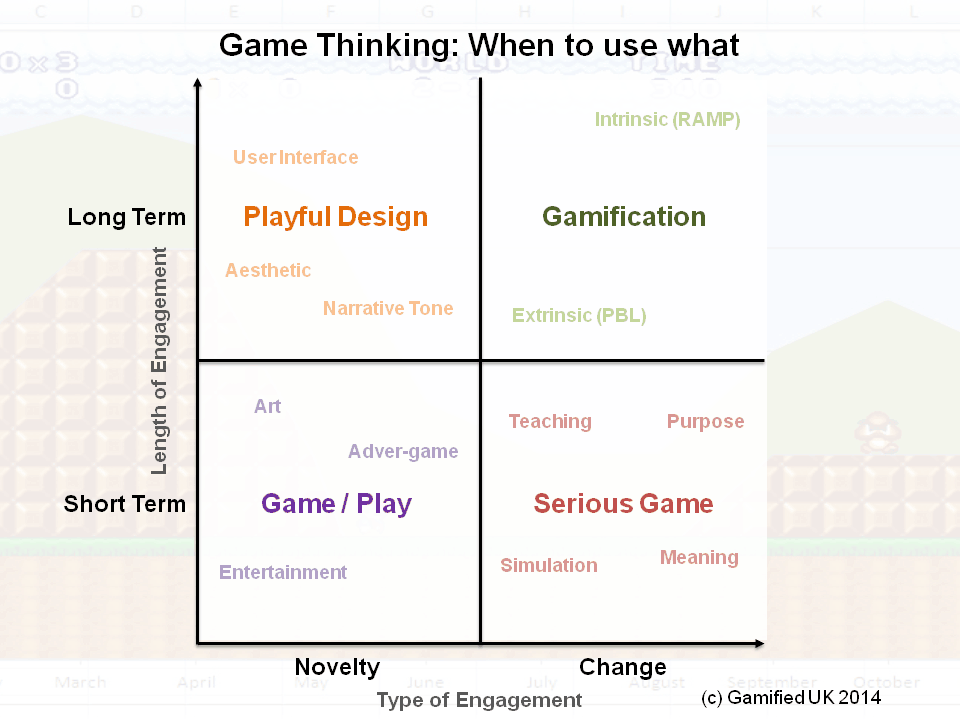A while back I started to introduce my alternative catch-all to Gamification, that is
Game Thinking.
Game Thinking takes four common components of game like or games based solutions and puts them under a single banner. Those are Playful Design / Game inspired design, Serious Games, Games and Gamification / Motivational Design (more on that another day). I was asked recently under what circumstances each would be most appropriate, so I hit powerpoint and made the following matrix thingy!
This is very similar to the Thin Layer vs Deep Level gamification model I presented a while ago – though slightly contradictory on the length of gamification engagement, so forgive that one!
Basically, if you want short term one off type engagement, head the way of a game – thing advertising games. If you are looking for short term engagements that provoke change, look at serious games (education games, games with purpose etc). Longer term engagement without looking for behavioural change, playful design may be the way to go (user interface and the like). Finally, if you are looking for long term engagement with behavioural change, go gamification. Now there is a minor caveat here. You want Intrinsic (RAMP) gamification for real long term, extrinsic (here represented as Points Badges and Leaderboards – PBL) can be part of the strategy, but will not give you the longer term engagement.
You can of course mix and match these. For instance, use a game to attract interest in a new product. Then use a serious game to onboard people. Have playful design elements and finally use intrinsic gamification to keep the whole thing going long term. For good measure, make to social to keep people interested even longer!


